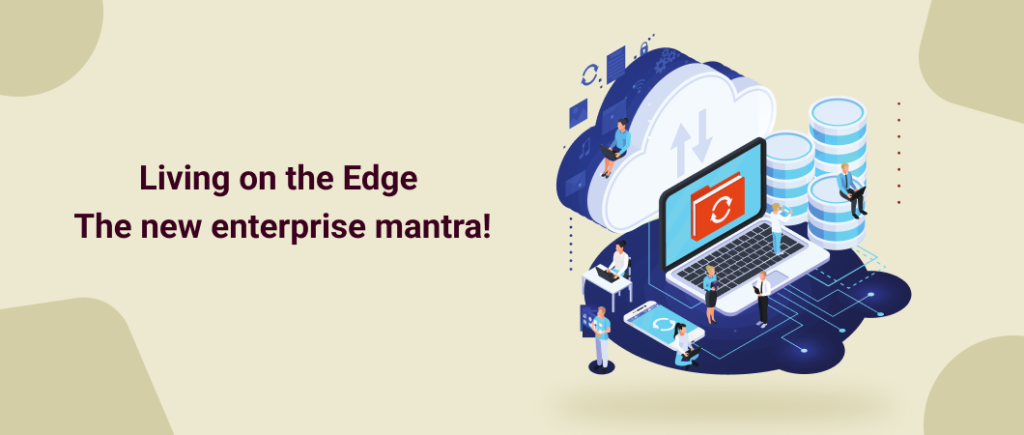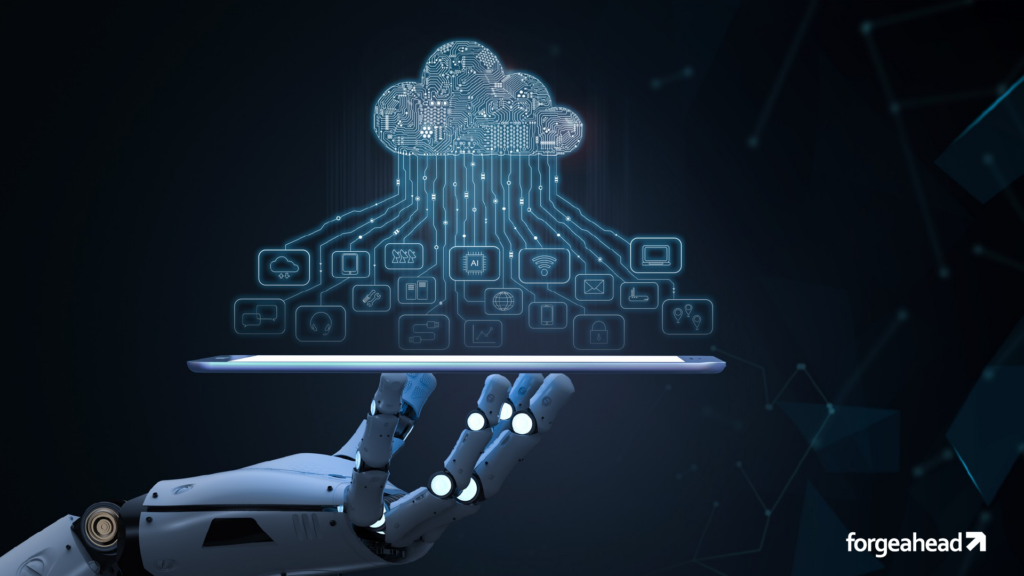Last updated on October 21st, 2024
In the wake of the COVID-19 pandemic, the demand for edge computing technology is witnessing exponential growth globally. According to MarketsandMarkets, the market size for edge computing reached $36.7 billion in 2021. Looking ahead, the global edge computing market is expected to grow at a CAGR of 19% and is projected to reach a market size of approximately $87.3 billion by 2026.
What is driving the exponential growth of edge computing? As we continue to see increasing volumes of data and web traffic, there is a rising demand for low-latency processing and real-time decision-making across business organizations.
Before discussing the reasons for the steep growth in the adoption of edge computing, let’s first understand what is edge computing and how exactly does it work?
What is Edge Computing and how does it work?
Simply put, edge computing is a distributed IT architecture that works across multiple computing platforms. In the “traditional” cloud computing model, the data is sent for processing to the cloud-hosted servers, while the processed data is sent back to the user.
Gartner predicts that by 2025, 75% of enterprise data will be generated outside centralized data center infrastructures. The prospect of moving large volumes of data can overload the existing cloud infrastructure on the Internet. Edge computing processes the data in the closest geographical proximity of the user (for instance, a local server or IoT device), thus improving the response time and saving on network bandwidth.
In short, edge computing effectively brings the cloud to the user device, instead of users reaching out to the cloud. How do IoT product companies benefit from adopting edge computing into their development process? Let us look at a few of its capabilities in the next section.
Edge Computing capabilities for IoT product companies
Typically, edge computing enables application data to be processed at the IoT device level. This contrasts with the “traditional” cloud computing model where connected IoT devices transmit their data to cloud-based servers for processing.
Here are some capabilities that should encourage organizations to shift from cloud-based computations to edge computing:
- Network speed
Edge computing can deliver a network performance of up to 10 times the speed of cloud networks. This makes it ideal for IoT applications that demand a minimum level of network latency. Effectively, this technology enables IoT applications to be executed on local networks, thus facilitating faster data processing. Common applications that can benefit from improved network speeds include analytics and diagnostic & monitoring applications.
- Flexible Deployment
Edge computing enables application deployments to be driven by specific business needs. Based on specific businesses imperatives and use cases, product companies can now determine whether to deploy a centralized or distributed solution.
Based on the computing requirements, application developers can easily scale up or down, and even change the deployment structure according to the deliverables.
- Real-time analytics
Using real-time analytics enabled by edge computing, product development companies can develop real-time insights into their customer behavior and identify any inefficiencies in the delivery process. Further, they can move analysis closer to the site of the action and improve responsiveness.
- Automation
Edge computing tools can quickly automate the process of onboarding multiple applications or services, thus reducing overall operational costs and time to revenue. On their part, automation tools can scale the computing resources for high (or low) traffics.
Next, let us look at some of the leading reasons that are driving the adoption of edge computing across the globe.
4 Reasons that are driving the growth in Edge Computing
Why are more companies adopting edge computing as their technology strategy? Here are 4 reasons that are driving this adoption:
- Extremely Low Latency
As put by Ken Carroll and Mahesh Chandramouli of Deloitte, “the smallest possible latency between data generation and the decision or action can be critical to preserving an organization’s agility.”
Effectively, business data is only valuable if it can be converted into insight within a few milliseconds. As companies continue to invest more into IoT devices, the massive volumes of generated data are driving the adoption of edge computing solutions.
For instance, autonomous vehicles embedded with IoT technology need to process large amounts of data including real-time traffic data, locations, destinations, and routes. This requires high computing power to make decisions within milliseconds, thus creating a perfect use case for edge computing.
- Bandwidth Availability
A Deloitte report states that 55% of the IoT data could soon be processed near the IoT device. This requires high bandwidth along with low latency, both of which are available with edge computing.
While IoT bandwidth has significantly amplified in recent times, it is still not adequate for the enormous data volumes. On its part, edge computing integrates processes, such that the network can easily compress, filter, and prioritize data with efficient usage of the bandwidth. The imminent arrival of 5G with its higher bandwidth, faster speeds, lower latency, and higher availability promises to deliver a further boost to edge solutions worldwide.
Among the best examples, public transit operators can deploy vehicle-based edge computing solutions to collect and process their passenger data.
- Data security and privacy
Since the introduction of data privacy regulations like the GDPR, data security and privacy have assumed greater business importance. Edge computing services can enable companies to achieve compliance in data security and privacy while achieving their customer experience objectives.
On its part, edge computing does provide inherent security through its ability to localize and catalog data into multiple nodes in place of storing it at a centralized location.
- The COVID-19 impact
Even as edge computing technology has existed for many years, the global pandemic is driving its adoption across industry domains. An ONS research study found that 85% of WFH employees would prefer the current hybrid working model even after the pandemic.
As more technology workers switch between home and remote office locations, edge computing can enable companies to make this transition, while delivering the required computing intelligence and security.
Conclusion
With the increase in IoT devices, product companies must create and deploy the right mix of centralized and edge computing capabilities depending on their business requirements. The real benefit of edge computing is centered around its extremely low latency and bandwidth, which makes it equally suitable for “traditional” corporate networks and remote locations that have minimal access to IoT devices and infrastructures.
With its years of expertise in building edge computing solutions, Forgeahead has enabled its customers to build high-quality IoT products and gain a market advantage.
Interested in knowing how we can help? Get in touch with us today.



